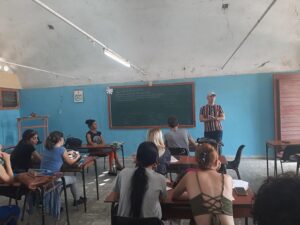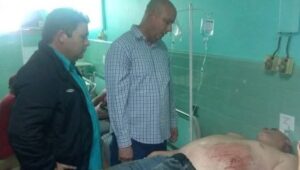In view of the presence of the Oropouche virus in the province of Santiago de Cuba and, recently, in Cienfuegos, authorities of the Cuban Ministry of Public Health (Minsap) reported today that the country reports no serious or critical cases or deaths from the disease.
Francisco Durán García, national director of epidemiology at Minsap, explained to the press that this is an arbovirosis that has never before been detected in the largest of the Antilles, but has been detected in the Americas region since 2023.
Oropouche is found in the Amazonian areas of Brazil and in other countries such as Bolivia, Colombia and Peru, he added.
The cases in Santiago de Cuba belong to two health areas, one of them in the town of Boniato, in the provincial capital, and the other in the municipality of Songo-La Maya, and in both places the sick have received medical care and have evolved favourably with an improvement in symptoms between the third and fourth day of the onset of the virus, he stressed.
These patients have been studied and monitored by the «Pedro Kourí» Institute of Tropical Medicine, where the country’s reference laboratories are located, said the epidemiologist.
The expert reported that new cases were also detected in the Perla del Sur, specifically in the municipalities of Cienfuegos, Abreu, Rodas, Aguada and Cumanayagua.
Durán García said that diagnoses show that the Oropouche virus is transmitted by vectors of the genus Culicidae (mosquitoes) and Culicoides (midges), whose presence in Cuba is still being studied.
Transmission occurs through the bites of the females of the aforementioned insects, which bite infected individuals, acquire the disease through their blood and then inoculate healthy people, he explained.
For these reasons, it is not necessary to wear masks or isolate oneself, as it is not a respiratory disease, but rather an incubation process of five to seven days between the bite and the onset of symptoms.
The virus produces a fever accompanied by muscle aches, joint pains, headaches and, on occasion, vomiting and diarrhoea have been reported, said Durán García.
It is vitally important that people with these symptoms go immediately to the health services, although there is no specific treatment for the symptomatic condition, only that required for the symptoms described above, said the national director of Epidemiology of the Minsap.
Unlike the Aedes aegypti, which transmits diseases such as yellow fever, dengue, Zika and chikungunya, the Culicidae breeds in places where water stagnates and in the masonry type, the specialist noted.
Sanitation is essential to combat Oropouche, as it tends to appear in places marked by a lack of hygiene in public and private spaces, warned Durán García.
Given the climatic conditions of high temperatures, breeding sites grow and the female Aedes aegypti mosquito reproduces rapidly, which also causes cases of dengue fever in the country, a disease that from a clinical point of view has greater complications than the new virus, he emphasised.
Everything that is done by community services and vector control campaigns is not enough, because it also depends on sanitation in each home, Durán García said.
Finally, the specialist insisted that the presence of the Oropouche virus in Cuba should not cause panic among people.




